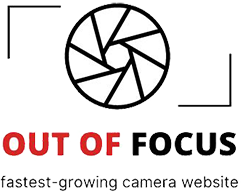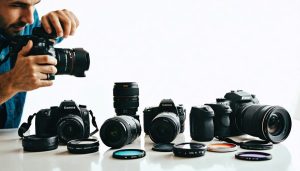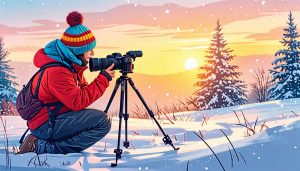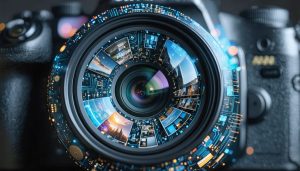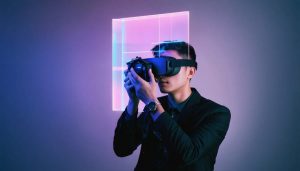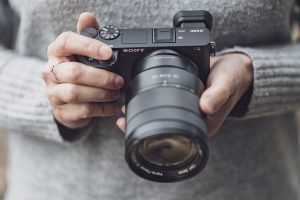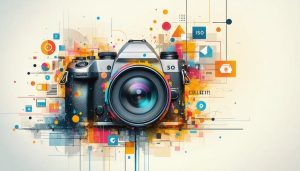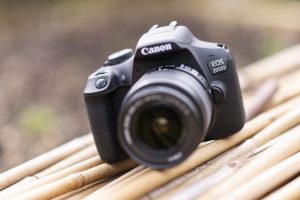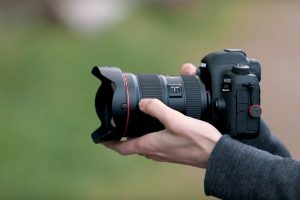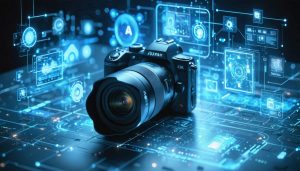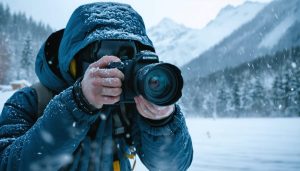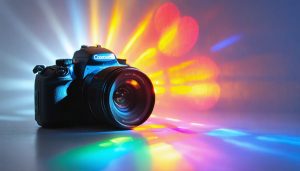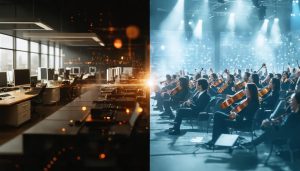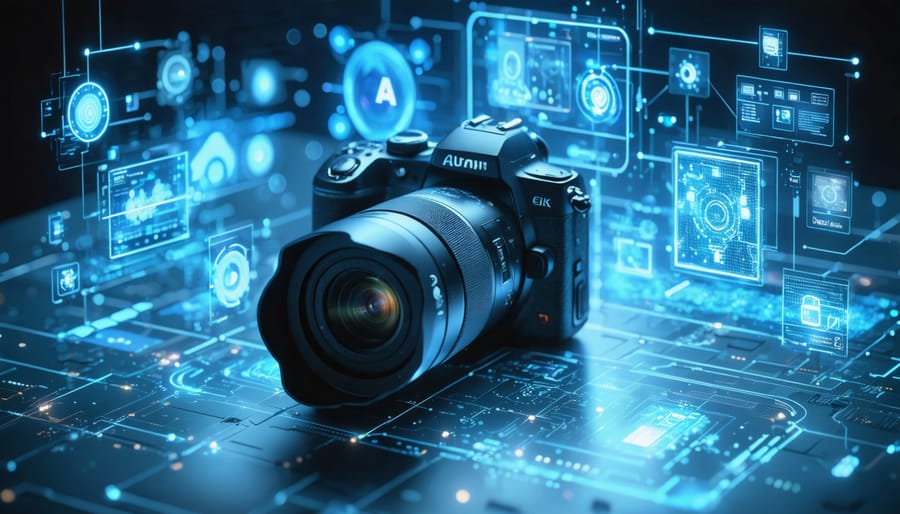
The future of photography isn’t just evolving—it’s experiencing a revolutionary transformation. From computational imaging that captures perfect shots in near-darkness to AI-powered autofocus systems that track subjects with uncanny precision, camera technology in 2024 has shattered the boundaries of what we once thought possible.
Today’s cameras aren’t just tools; they’re sophisticated computers with lenses, leveraging artificial intelligence, machine learning, and advanced sensors to create images that would have seemed impossible just a few years ago. Breakthrough innovations like 8K video capture at 120fps, global shutter sensors that eliminate rolling shutter artifacts, and sophisticated focus-stacking algorithms are redefining both professional photography and casual snapshots.
What’s particularly exciting is how these advancements are democratizing high-end photography. Features once reserved for $10,000 professional cameras are now available in smartphones and mid-range mirrorless bodies. Real-time subject recognition can instantly identify and track everything from birds in flight to race cars, while computational RAW capture combines multiple exposures into a single, perfect frame—all happening faster than you can press the shutter button.
As we dive deeper into these innovations, we’ll explore how these technologies are not just improving image quality but fundamentally changing how we approach photography itself. Whether you’re a professional photographer or an enthusiastic hobbyist, understanding these advances is crucial for staying ahead in the rapidly evolving world of digital imaging.
Computational Photography: The New Frontier

AI-Powered Scene Recognition
Modern cameras have evolved far beyond simple light-capturing devices, thanks to sophisticated AI-powered photography systems that can analyze and understand scenes in real-time. This revolutionary technology acts like a knowledgeable photography assistant, constantly evaluating your shooting environment and adjusting settings for optimal results.
Imagine pointing your camera at a sunset landscape. Within milliseconds, the AI recognizes multiple elements: the bright sky, darker foreground, moving clouds, and various textures. It then automatically applies the ideal settings to capture both the vibrant colors in the sky and the intricate details in the shadows. This same intelligence works across countless scenarios, from fast-moving sports events to dimly lit indoor gatherings.
Modern scene recognition systems can identify up to 32 different shooting scenarios, including portraits, wildlife, architecture, and night scenes. For portrait photography, the AI automatically detects faces, adjusts skin tones, and ensures proper exposure across different lighting conditions. When shooting wildlife, it can track moving subjects and adjust shutter speeds accordingly.
What makes this technology particularly impressive is its learning capability. The more images it processes, the better it becomes at recognizing patterns and making intelligent decisions. Some advanced systems can even recognize specific composition techniques and suggest better framing options.
For photographers who prefer manual control, these AI features can be selectively enabled or disabled. This flexibility allows seasoned professionals to maintain creative control while still benefiting from AI assistance when needed. Whether you’re a beginner looking for guidance or a professional seeking efficiency, scene recognition technology has become an invaluable tool in modern photography.
Multi-Frame Processing
Gone are the days when a single press of the shutter captured just one moment in time. Modern cameras now employ sophisticated multi-frame processing techniques that combine multiple exposures into a single, superior image. This revolutionary approach has transformed how we capture challenging scenes and elevated image quality to unprecedented levels.
Think of multi-frame processing as your camera taking a rapid burst of photos and intelligently blending the best elements from each frame. For instance, when shooting a sunset, the camera might capture one frame optimized for the bright sky and another for the darker foreground, merging them seamlessly into a perfectly balanced final image.
One of the most impressive applications is in low-light photography. By combining multiple frames, cameras can significantly reduce noise while preserving detail – something that was previously impossible with single-shot imaging. This technique, combined with AI-enhanced image processing, allows photographers to shoot handheld in conditions that would traditionally require a tripod.
The technology also excels in handling high-contrast scenes. Modern cameras can capture up to 15 frames in a fraction of a second, each with different exposure values, creating images with dramatically improved dynamic range. This means you can capture both the deepest shadows and brightest highlights without losing detail in either extreme.
For action photographers, multi-frame processing offers features like motion stacking, where several frames are combined to show movement progression in a single image. Nature photographers benefit from enhanced detail capture, where multiple shots are merged to create images with exceptional sharpness and clarity.
Sensor Innovation: Beyond Megapixels
Stacked Sensor Design
One of the most significant breakthroughs in recent camera technology is the stacked sensor design, which revolutionizes how image sensors capture and process light. Unlike traditional single-layer sensors, stacked sensors feature multiple layers of specialized circuitry, each dedicated to specific functions like light capture, signal processing, and memory.
Think of it as a high-tech sandwich: the top layer focuses solely on gathering light, while additional layers beneath handle data processing and storage. This clever architecture allows for much faster read speeds and superior performance compared to conventional designs. For photographers, this translates to incredible real-world benefits, including reduced rolling shutter effects, faster continuous shooting speeds, and improved autofocus performance.
The magic happens because the light-capturing photodiodes aren’t competing for space with processing circuits on the same layer. By separating these components, manufacturers can optimize each layer for its specific purpose. The result? Sensors that can process data up to 10 times faster than traditional designs.
Professional sports photographers particularly benefit from this technology, as it enables crystal-clear capture of fast-moving subjects without distortion. Even in challenging lighting conditions, stacked sensors demonstrate superior noise handling and dynamic range. For videographers, the reduced rolling shutter effect means smoother footage when panning or capturing fast motion.
As this technology continues to evolve, we’re seeing stacked sensors appear in more camera models across different price points, making these advanced capabilities accessible to a broader range of photographers.
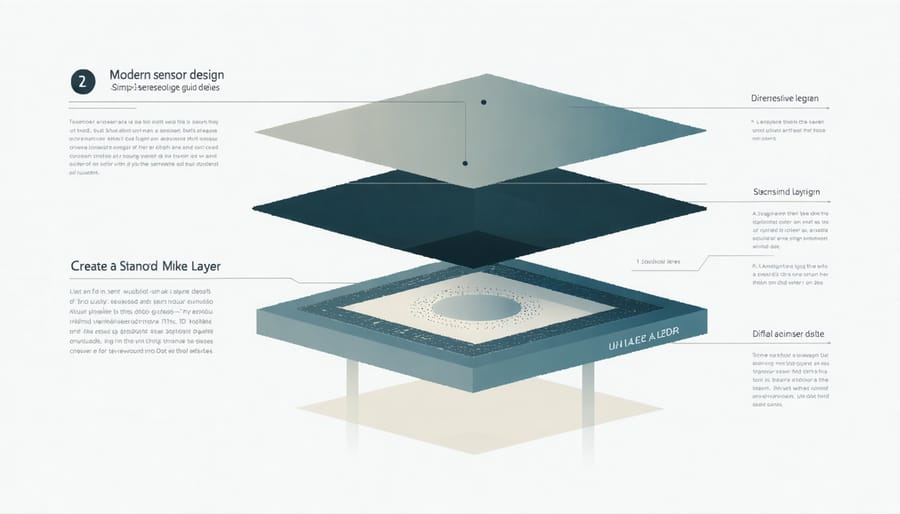
Quad-Bayer Technology
In the quest for better low-light performance, manufacturers have introduced an innovative pixel arrangement called Quad-Bayer technology. This clever design clusters four pixels together in a square pattern, effectively creating a larger light-gathering surface while maintaining high resolution capabilities.
Think of it as having four smaller buckets that can either work independently to collect raindrops (light) or combine into one larger bucket when needed. In bright conditions, these pixels work independently to capture fine detail, delivering the full resolution of the sensor. However, when light levels drop, the four pixels merge their signals together, essentially creating larger, more light-sensitive pixels that significantly improve low-light performance.
The real magic happens in the processing stage, where sophisticated algorithms interpret this unique pixel arrangement to deliver optimal results based on shooting conditions. For instance, when shooting in dim environments, a 48-megapixel Quad-Bayer sensor effectively becomes a 12-megapixel sensor with superior light sensitivity, often producing cleaner, brighter images than traditional sensor designs.
This technology has become increasingly common in modern smartphones and some mirrorless cameras, offering photographers the best of both worlds: high resolution for detailed daylight shots and excellent low-light capabilities when needed. While it’s not a perfect solution – there can be some trade-offs in color accuracy and edge detail – the benefits generally outweigh the limitations, particularly for photographers who frequently shoot in challenging lighting conditions.
Breakthrough Autofocus Systems
Eye-AF and Subject Recognition
Modern cameras have revolutionized the way we capture subjects through their advanced autofocus capabilities, particularly with Eye-AF and subject recognition technology. These intelligent systems can now instantly detect and track human faces, eyes, and even specific animals, ensuring your subjects remain perfectly focused regardless of their movement.
Imagine shooting a fast-paced wedding ceremony or tracking birds in flight – where split-second focusing decisions make the difference between a keeper and a missed shot. Today’s Eye-AF systems can lock onto a subject’s eye with remarkable precision, maintaining focus even when your subject turns their head or moves erratically.
The technology has evolved beyond just human recognition. Many cameras now offer specialized tracking modes for wildlife photography, capable of identifying and following specific animals like birds, cats, or dogs. Some high-end models can even distinguish between different types of vehicles, making them invaluable tools for sports and motorsport photography.
What makes this technology truly remarkable is its real-time processing capability. Using artificial intelligence and machine learning algorithms, these systems analyze scenes thousands of times per second, predicting subject movement and adjusting focus accordingly. This level of sophistication means photographers can concentrate more on composition and timing, knowing their camera will handle the technical aspects of focus tracking.
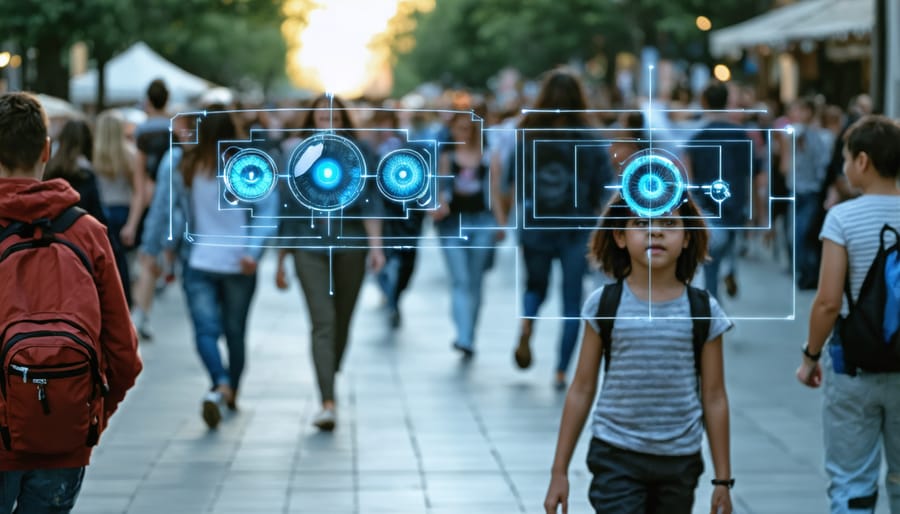
Hybrid AF Systems
Modern cameras have revolutionized autofocus by combining two powerful technologies: phase detection and contrast detection. This hybrid approach delivers the best of both worlds, offering photographers unprecedented accuracy and speed in capturing their subjects.
Phase detection, originally developed for DSLR cameras, excels at tracking moving subjects and providing quick initial focus. It works by analyzing light patterns to determine if your subject is in focus, much like how our eyes naturally adjust to scenes. Contrast detection, on the other hand, maximizes precision by measuring the contrast between adjacent pixels until it finds the sharpest possible image.
When these systems work together, magic happens. For instance, while photographing sports, phase detection quickly locks onto an athlete in motion, while contrast detection fine-tunes the focus for crystal-clear details. This dual approach has made focusing in low light significantly more reliable and has improved face and eye detection capabilities dramatically.
Recent developments have pushed hybrid AF systems even further. Camera manufacturers now incorporate hundreds, sometimes thousands, of focus points across the entire frame, powered by advanced processors and AI algorithms. This means whether you’re shooting landscapes, portraits, or fast-moving wildlife, your camera can track and maintain focus with remarkable consistency.
The real breakthrough comes in how seamlessly these systems now work together, requiring minimal input from photographers while delivering professional-level results.
Next-Generation Video Capabilities
8K Recording
8K recording represents a massive leap forward in video quality, capturing footage at an astounding 7680 x 4320 pixels – that’s four times the resolution of 4K and sixteen times that of standard HD. While this might seem like overkill for everyday filming, the implications for professional videography and cinema are game-changing.
The most immediate benefit of 8K recording is the incredible flexibility it offers in post-production. Photographers and videographers can crop significantly into their footage while maintaining crisp 4K quality, essentially allowing multiple camera angles from a single recording. This has revolutionized single-camera productions, making complex shots more achievable with minimal equipment.
However, 8K comes with practical considerations. The files are enormous – a single minute of raw 8K footage can consume upwards of 7GB of storage space. This demands robust storage solutions and powerful editing computers. Additionally, most displays can’t yet show 8K content at native resolution, making immediate playback challenging.
Despite these hurdles, early adopters are finding creative applications. Wildlife photographers use 8K to capture minute details from safe distances, while commercial photographers leverage the resolution for extracting high-quality still frames from video sequences. Real estate videographers are using 8K to create virtual tours with unprecedented detail, allowing viewers to zoom in on specific architectural features without losing quality.
As storage technology advances and processing power increases, 8K recording is gradually becoming more practical for everyday use, though it remains primarily in the professional realm for now.

Raw Video Features
Today’s consumer cameras are pushing the boundaries of professional video capabilities, offering features that were once exclusive to high-end cinema cameras. Modern mirrorless cameras now routinely support 4K video at 60fps, with some models reaching impressive 8K resolution. But it’s not just about resolution – the real game-changer is the inclusion of 10-bit 4:2:2 color sampling and high bitrates, allowing for more flexibility in post-production.
Raw video recording, previously a professional-only feature, has become increasingly common in consumer cameras. This format preserves maximum image data, giving videographers unprecedented control over exposure, white balance, and color grading. Many cameras now offer internal ProRes RAW or Blackmagic RAW recording, eliminating the need for external recorders.
Advanced features like dual native ISO have transformed low-light performance, while in-body image stabilization systems can now deliver gimbal-like smoothness. Picture profiles like S-Log and V-Log provide greater dynamic range, often exceeding 14 stops, making consumer cameras viable options for professional productions.
Perhaps most impressive is the autofocus capability in video mode. AI-powered systems can now track subjects with remarkable accuracy, even maintaining focus through complex movements. Combined with features like focus pulling and face/eye detection, these systems are revolutionizing solo videography operations.
These advancements have effectively blurred the line between consumer and professional video equipment, making high-end filmmaking more accessible than ever.
Future-Ready Connection Standards
Modern cameras are revolutionizing how we connect and share our work, with new standards pushing the boundaries of what’s possible in professional and amateur photography. Gone are the days when essential camera connectivity options were limited to memory card transfers and basic USB connections.
Today’s cameras feature built-in Wi-Fi 6E and Bluetooth 5.2, enabling seamless transfer speeds of up to 2.4 Gbps – fast enough to transfer a full day’s worth of RAW files in minutes. But it’s not just about speed; these connections are more stable and secure than ever, with advanced encryption protocols protecting your valuable images during transfer.
Perhaps the most exciting development is the integration of 5G capabilities in premium camera bodies. This allows photographers to instantly upload high-resolution images to cloud storage or directly to clients while still on location. Think wedding photographers sending preview shots to couples during the reception, or sports photographers delivering action shots to news desks before the game ends.
The new Camera-to-Cloud (C2C) protocol is changing workflow dynamics entirely. Instead of waiting to return to the studio, images can be automatically backed up and synced across devices. This real-time collaboration feature enables remote teams to start editing while you’re still shooting, dramatically reducing turnaround times for commercial projects.
Many manufacturers are also adopting the universal Matter standard, ensuring better interoperability between different brands and accessories. This means your camera can seamlessly communicate with lights, triggers, and other smart studio equipment, regardless of the manufacturer.
Looking ahead, emerging technologies like Li-Fi (Light Fidelity) promise even faster data transfer rates using light waves, potentially revolutionizing studio setups where traditional Wi-Fi signals might be congested. These advances aren’t just convenient – they’re reshaping how photographers work, collaborate, and deliver their creative vision.
The rapid evolution of camera technology is reshaping not just how we capture images, but how we experience and share our world. From computational photography that pushes the boundaries of what’s possible in low light to AI-powered autofocus systems that track subjects with unprecedented precision, these innovations are democratizing professional-quality photography while opening new creative possibilities for artists and documentarians alike.
As we look ahead, the convergence of traditional camera hardware with artificial intelligence and computational techniques promises even more exciting developments. We’re likely to see cameras that can understand scenes at a semantic level, offering creative suggestions and automatically adjusting settings based on artistic intent rather than just technical parameters. The line between photography and computational imaging will continue to blur, with future devices potentially capable of capturing not just images, but complete light-field data that can be manipulated extensively in post-processing.
For photographers at all levels, this technological revolution means more tools to realize their creative vision with fewer technical barriers. However, the fundamental principles of composition, lighting, and storytelling remain as important as ever. The best photographers will be those who can harness these new technologies while maintaining their artistic voice and vision.
The future of camera technology isn’t just about better sensors or faster processors – it’s about reimagining what’s possible in visual storytelling. As these technologies mature, they’ll continue to push the boundaries of creativity while making sophisticated imaging techniques accessible to everyone who wants to tell their story through photography.
